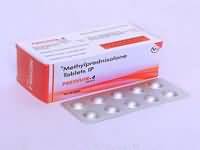Glimepiride

Glimepiride
CLINICAL USE
Non-insulin dependent diabetes mellitus
DOSE IN NORMAL RENAL FUNCTION
1–4 mg daily; maximum 6 mg daily taken shortly before or with first main meal
PHARMACOKINETICS
Molecular weight :490.6 %Protein binding :>99 %Excreted unchanged in urine : 0 (58–60% as metabolites) Volume of distribution (L/kg) :0.113half-life – normal/ESRD (hrs) :5–9/Prolonged DOSE IN RENAL IMPAIRMENT
GFR (mL/MIN)
20 to 50 : Dose as in normal renal function 10 to 20 : Dose as in normal renal function <10 : Start with a low dose and monitor closely DOSE IN PATIENTS UNDERGOING RENAL REPLACEMENT THERAPIES
CAPD :Unlikely to be dialysed. Dose as in GFR <10 mL/min HD :Unlikely to be dialysed. Dose as in GFR <10 mL/minHDF/high flux :Unlikely to be dialysed. Dose as in GFR <10 mL/minCAV/VVHD :Unlikely to be dialysed. Dose as in GFR 10 to 20 mL/min IMPORTANT DRUG INTERACTIONS
Potentially hazardous interactions with other drugsAnalgesics: effects enhanced by NSAIDs Antibacterials: effects enhanced by chloramphenicol, sulphonamides, and trimethoprim; effect reduced by rifamycinsAnticoagulants: effect possibly enhanced by coumarins; also possibly changes to INR Antifungals: concentration increased by fluconazole and miconazole and possibly voriconazoleSulfinpyrazone: enhanced effect of sulphonylureas ADMINISTRATION
Reconstition
– Route
Oral Rate of Administration
–Comments
–
See how to identify renal failure stages according to GFR calculation
See how to diagnose irreversible renal disease
Home









